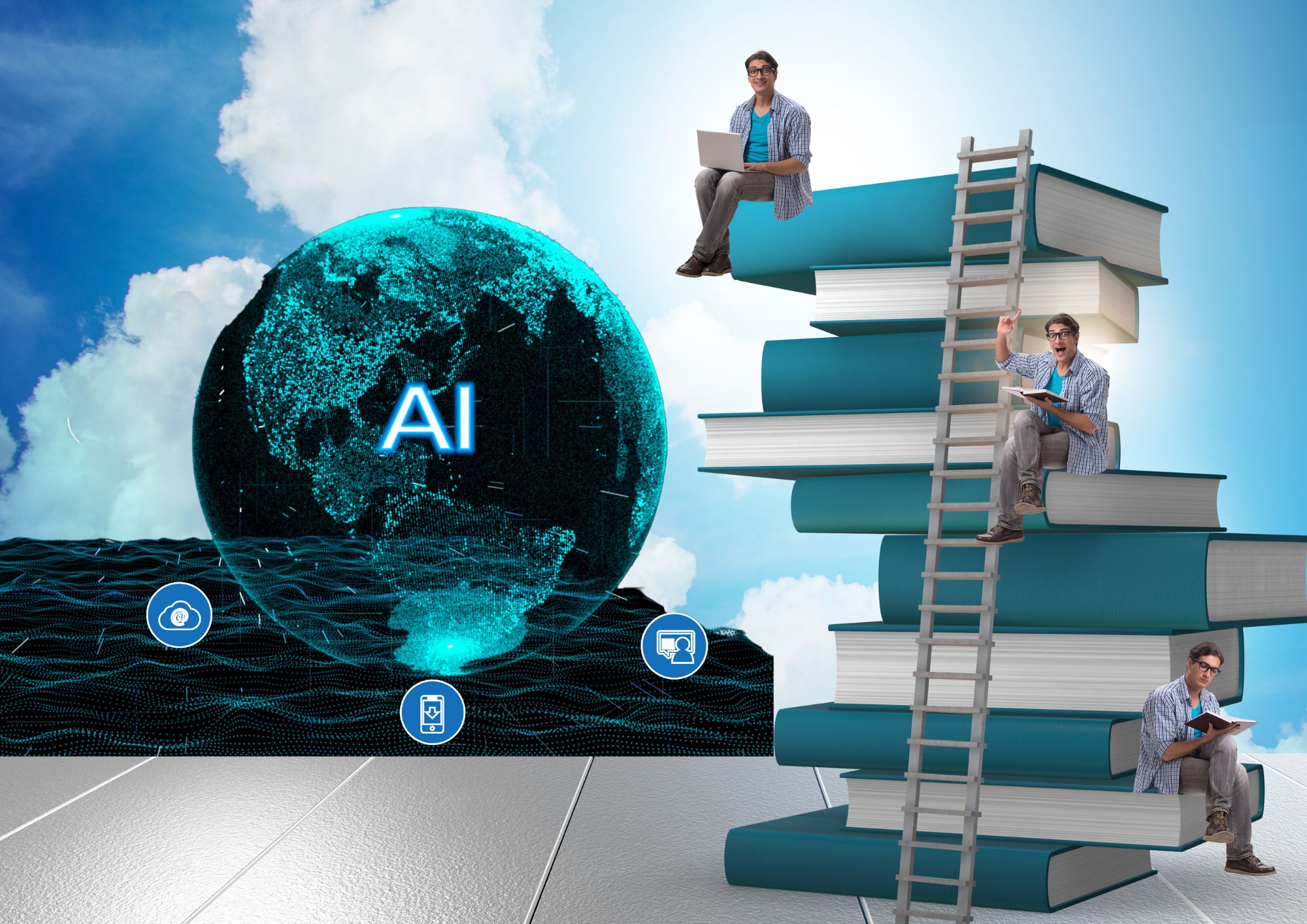The field of education has experienced significant changes over the past few years, with AI in education playing a substantial role in this transformation.
AI automation has introduced automated tutoring, e-learning, and other cutting-edge technologies to the industry, all of which have the potential to revolutionize the way we approach teaching and learning.
In this article, we’ll delve deep into these innovations, providing real-life examples, facts, and figures to illustrate the impact of AI automation in education.
AI-powered learning platforms
What are they?
AI-powered learning platforms leverage artificial intelligence to provide customized learning experiences that cater to each student’s unique needs.
These platforms use algorithms and machine learning to analyze students’ learning patterns, skill levels, and progress, enabling educators to tailor their teaching strategies more effectively.
Examples
- Carnegie Learning’s MATHia: MATHia is an AI-driven math learning platform that offers personalized instruction and real-time feedback to students. MATHia has been shown to improve students’ math scores by up to 14 percentile points!
- Querium’s StepWise Virtual Tutor: StepWise is an AI-powered virtual tutor that helps students master STEM subjects. It offers personalized, step-by-step guidance to help students understand complex concepts better.
Customized learning experiences
Benefits
- Improved comprehension: AI automation in education allows for personalized learning paths, which can lead to better comprehension and retention of knowledge.
- Reduced learning gaps: Customization helps address individual learning gaps, ensuring that all students have the opportunity to reach their full potential.
- Increased motivation: Personalized learning experiences can increase student motivation, as they feel more engaged and in control of their learning journey.
Facts and Figures
- According to a 2017 study by the RAND Corporation, students who engaged in personalized learning experienced significant gains in mathematics and reading compared to their peers who followed a traditional curriculum.
- A 2019 study published in the Journal of Educational Psychology found that personalized learning improved student performance by 8 percentile points on average.
Enhanced student engagement
AI-driven gamification
- Definition: Gamification refers to the use of game design elements in non-gaming contexts, such as education, to increase engagement and motivation.
- Examples: AI-driven gamification platforms like Kahoot! and Quizizz have transformed the way students participate in class, making learning more enjoyable and interactive.
AI-powered chatbots
- Definition: AI-powered chatbots are virtual assistants designed to engage with students through natural language processing and machine learning, providing immediate support and guidance.
- Examples: Chatbots like ALEKS and Duolingo’s language-learning chatbot have proven effective in increasing student engagement and improving learning outcomes.
Data-driven insights in education
Importance
- Data-driven insights allow educators to make informed decisions about curriculum design, resource allocation, and teaching strategies.
- AI-driven data analysis can identify patterns and trends that may not be evident through traditional methods, leading to more effective interventions and support for students.
Examples
- DreamBox Learning: DreamBox is an adaptive math learning platform that uses data-driven insights to adjust its content in real-time, providing personalized instruction to students.
- Knewton is an AI-driven platform that analyzes student data to create customized learning experiences, helping educators identify and address knowledge gaps.
Adaptive learning technology
Definition
Adaptive learning technology is a form of AI automation in education that modifies instructional content and pacing based on an individual student’s performance, learning preferences, and other factors.
Benefits
- Personalization: Adaptive learning technology provides a more personalized learning experience, catering to individual students’ strengths and weaknesses.
- Efficiency: By adapting to each student’s needs, adaptive learning technology can help students learn more efficiently and at their own pace.
- Improved outcomes: Adaptive learning has been shown to improve student performance and retention rates.
Examples
- Smart Sparrow: Smart Sparrow is an adaptive learning platform that uses AI algorithms to create personalized learning experiences for students, adjusting content and assessments based on their progress and performance.
- Cognii: Cognii is an AI-driven platform that offers personalized tutoring and feedback, helping students improve their writing skills.
AI automation in education, including automated tutoring and e-learning, has the potential to transform the teaching and learning landscape.
By providing customized learning experiences, enhanced student engagement, data-driven insights, and adaptive learning technology, AI is revolutionizing education and creating new opportunities for students and educators alike.
As we continue to embrace these innovations, we can expect to see even more significant advancements in the way we teach and learn.
Remember to use the keywords “AI in education, automated tutoring, e-learning” throughout the article to optimize for SEO and ensure a high search ranking!
Thank you for reading our blog, we hope you found the information provided helpful and informative. We invite you to follow and share this blog with your colleagues and friends if you found it useful.
Share your thoughts and ideas in the comments below. To get in touch with us, please send an email to dataspaceconsulting@gmail.com or contactus@dataspacein.com.
You can also visit our website – DataspaceAI





